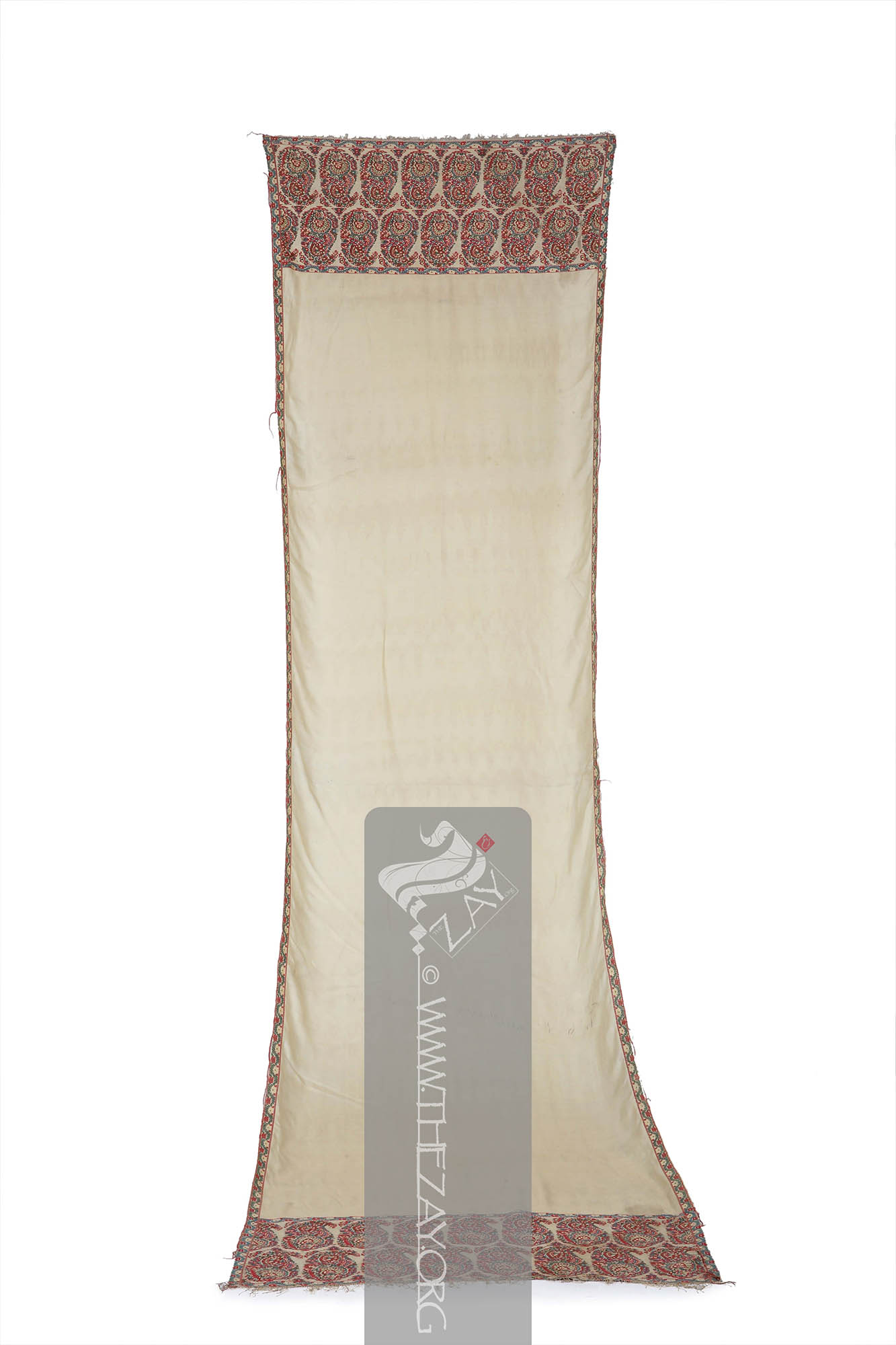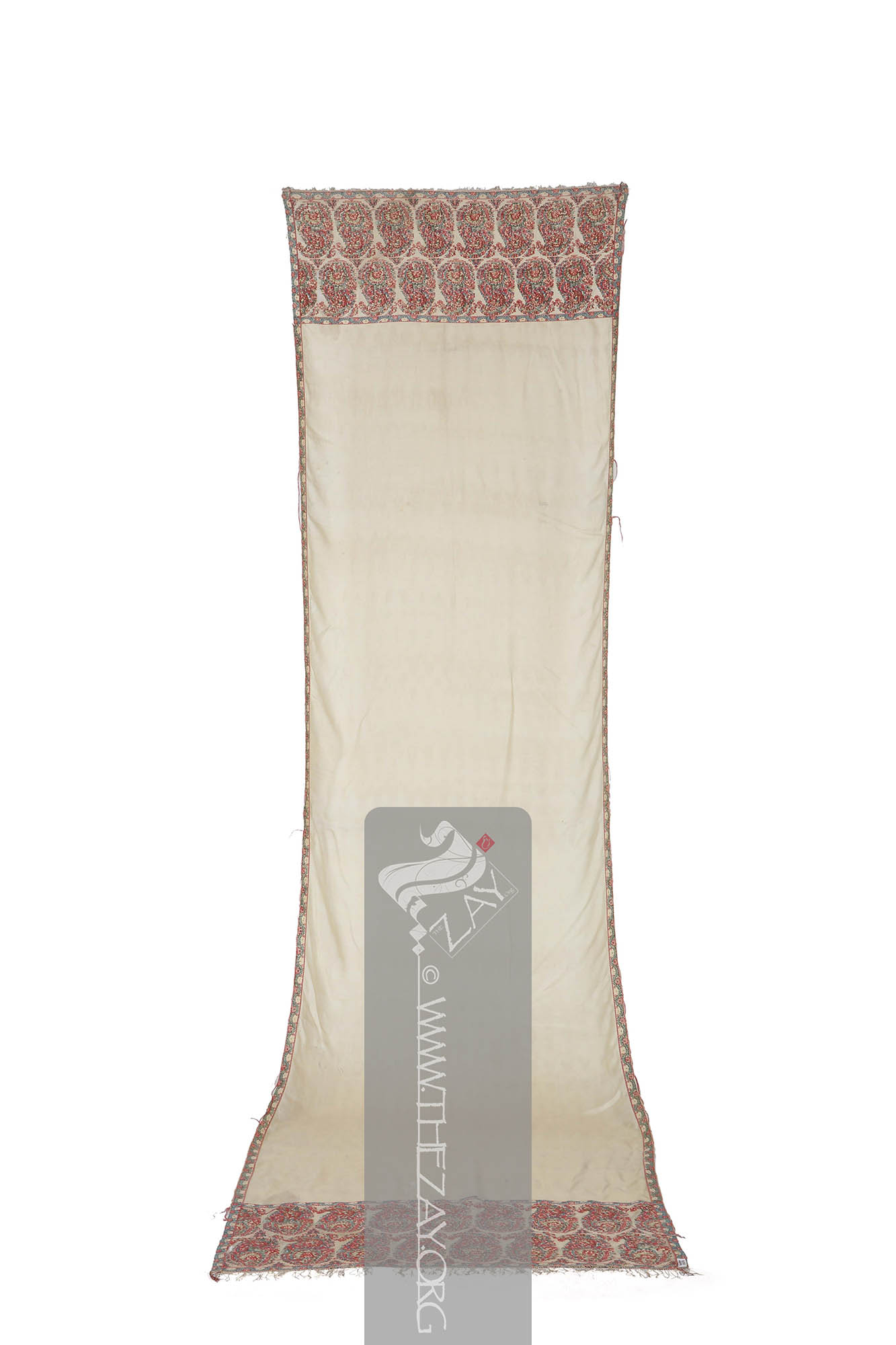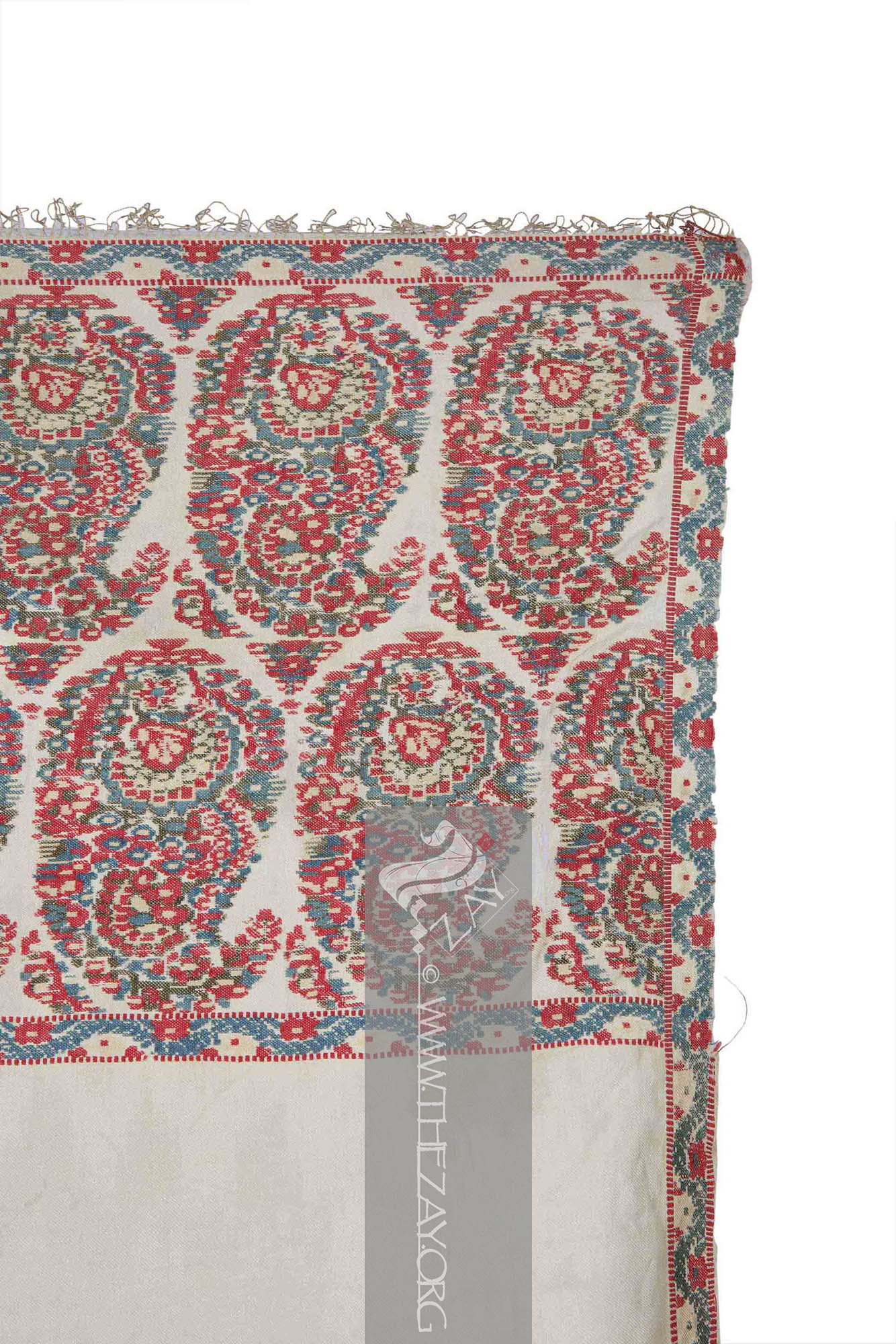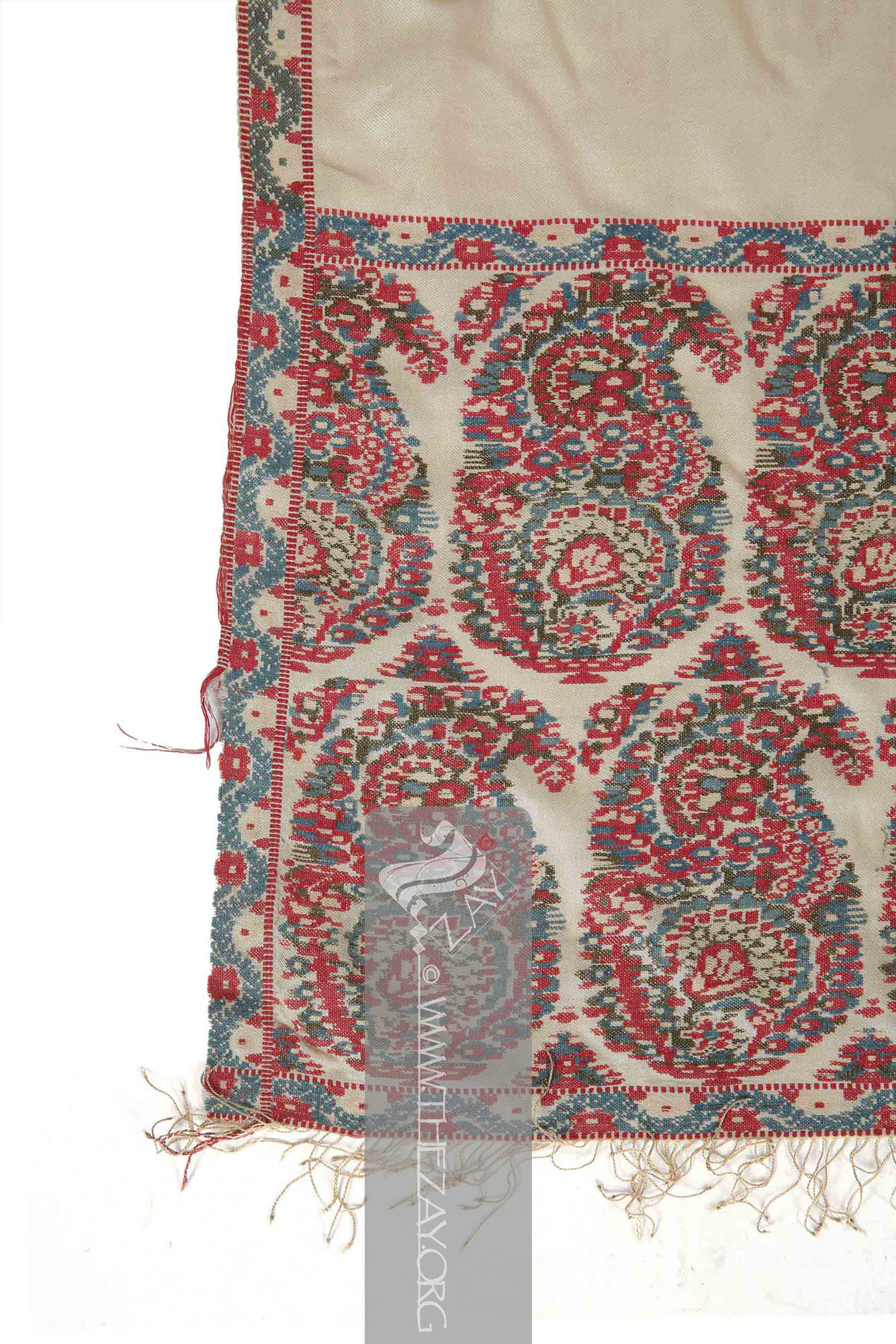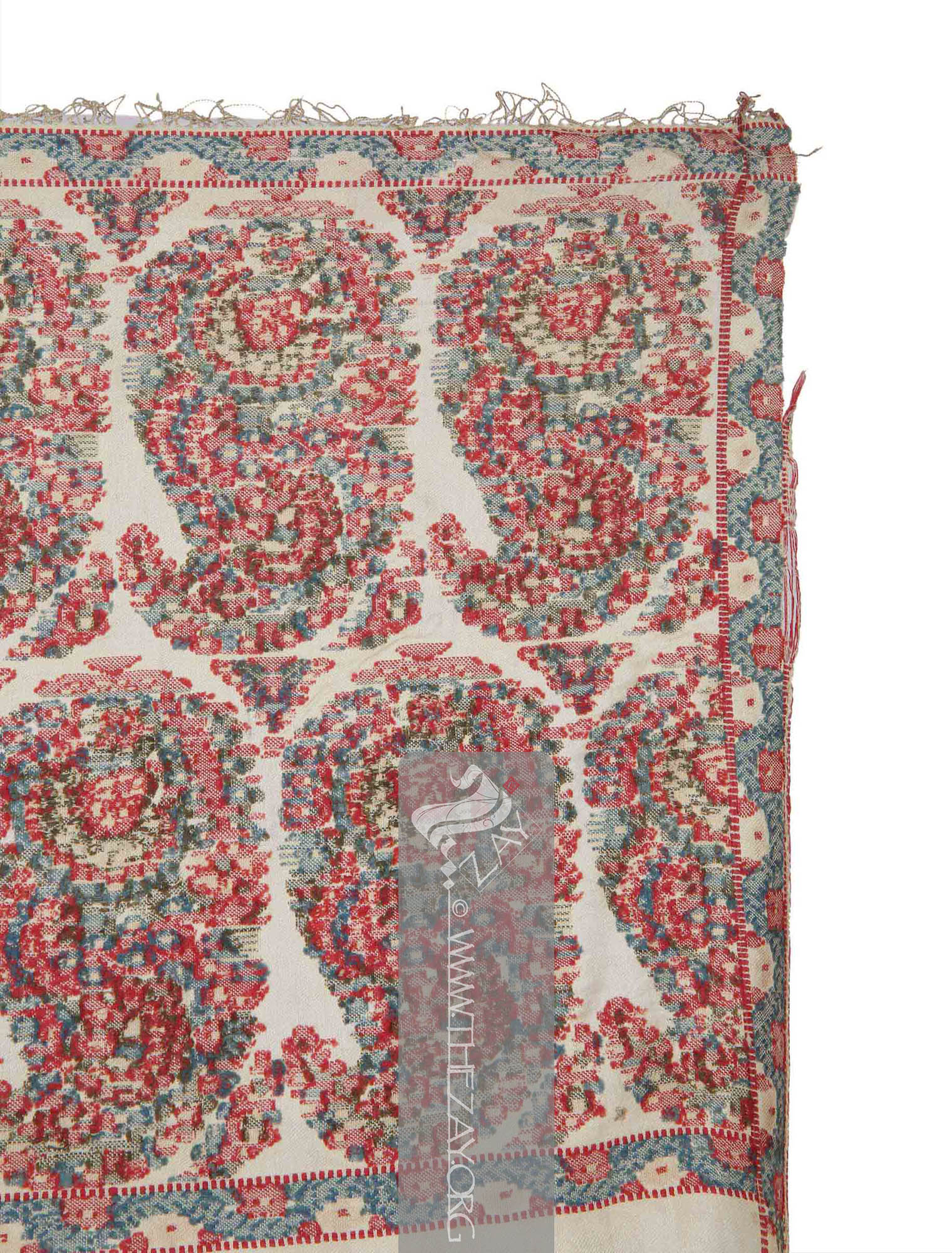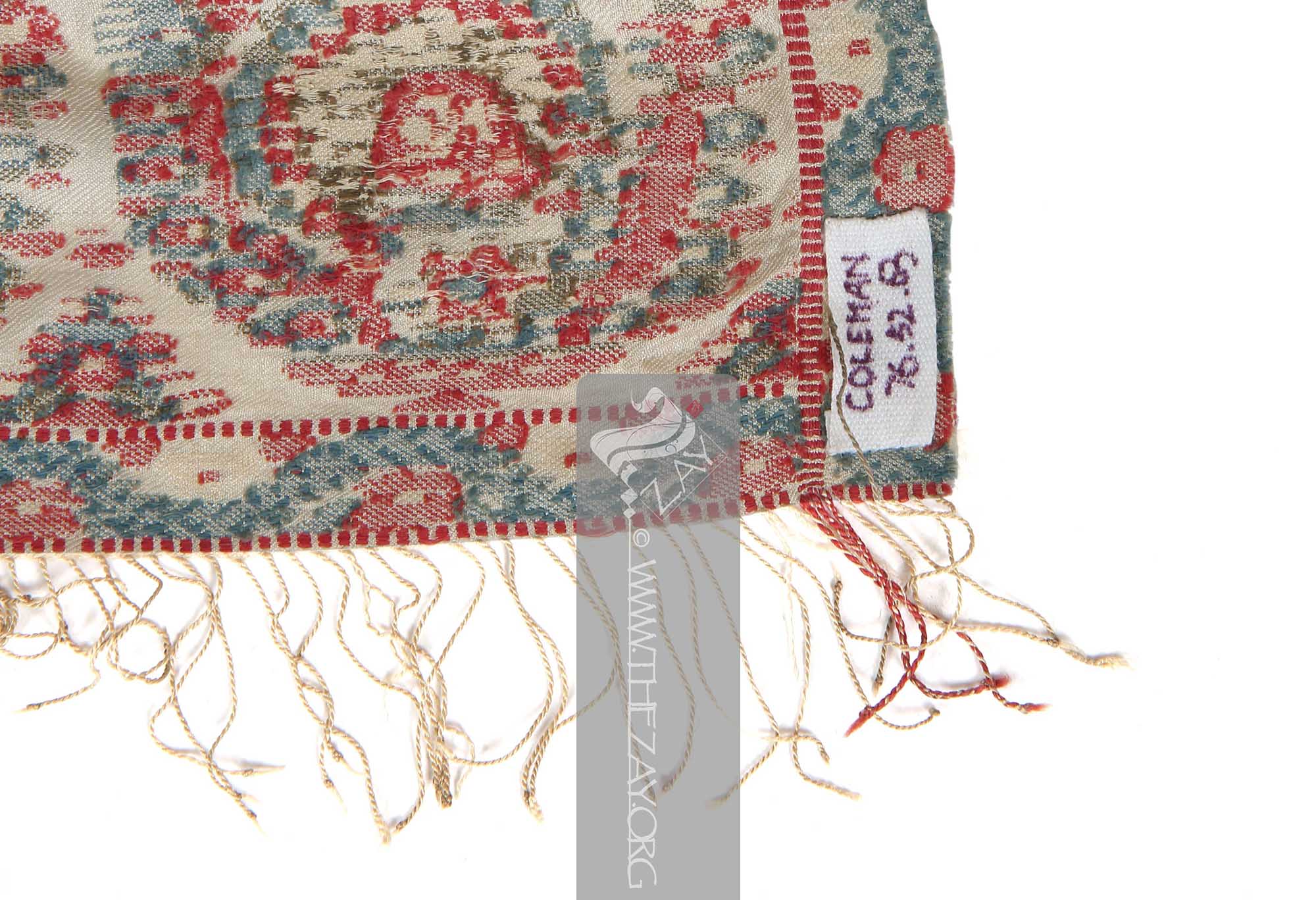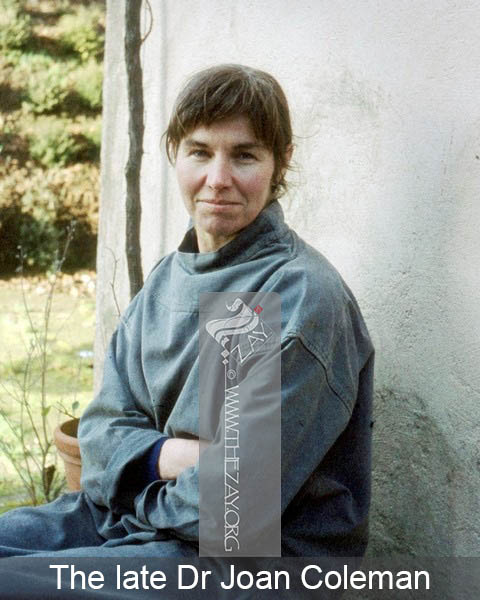| Local Name | Long_shawl, kirking_shawl, paisley_shawl |
| Object Category | Overgarment Cloak |
| Gender | Female |
| Place Of orgin | Europe |
| Region | Norwich |
| Object Range | England, Scotland, Wales, Ireland, France, America |
| Dimensions | Length: 290 cm Width: 77 cm |
| Materials | Silk Wool |
| Technique | Machine Stitched Woven |
| Motif | Floral Paisley |
| Provenance | Purchased, Dr Joan Coleman Collection, Kerry Taylor Auctions, London 2021 |
| Location | The Zay
Zay: (Arabic: costume, Pl. azyaā’), a set of clothes in a style typical of a particular country or historical period. Initiative |
| Status | In Storage |
| ZI number | ZI2021.500952.4 EUROPE |




